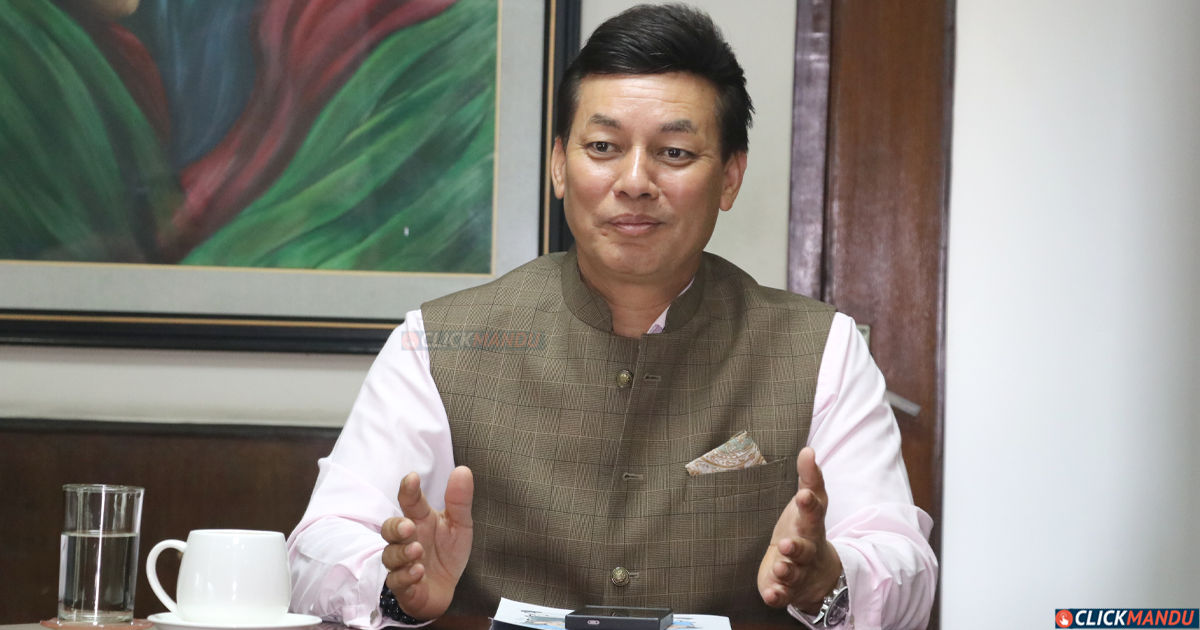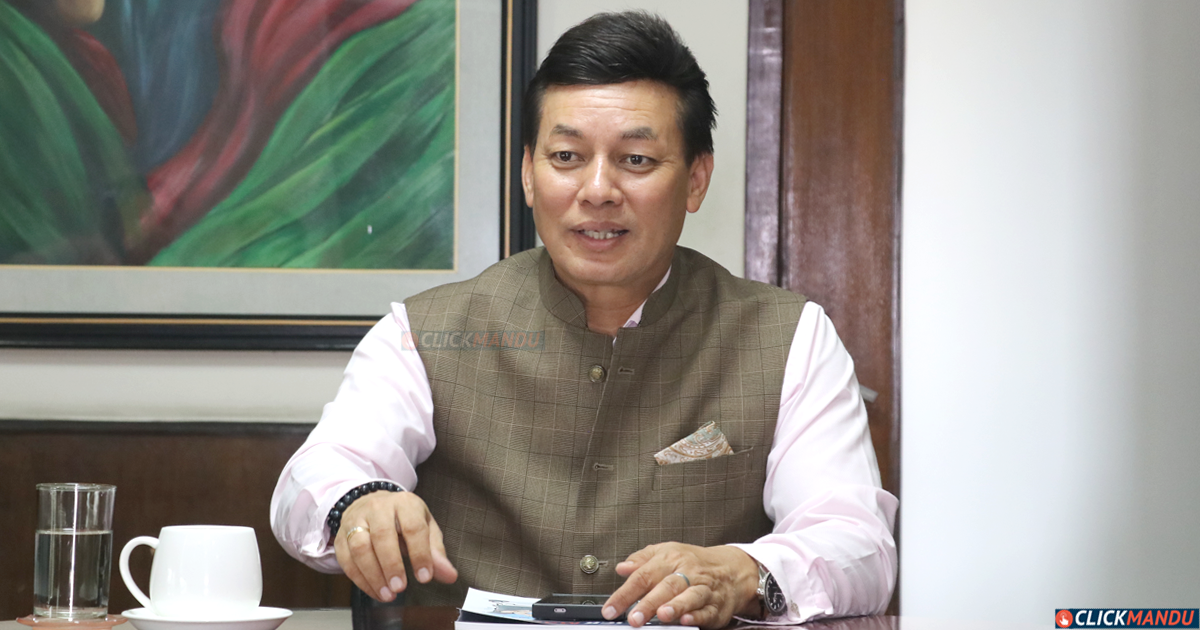Kathmandu: Nepal’s insurance industry has come a long way in the last three decades, but it still faces deep-rooted challenges that could hamper its long-term growth and impact.
In an exclusive interview with Clickmandu, Chunky Chhetri, Chief Executive Officer of Sagarmatha Lumbini Insurance and former President of the Nepal Insurers’ Association, shed light on the sector’s evolution, current shortcomings, and the roadmap for reform.
Having entered the industry in 1991, Chhetri has witnessed firsthand the insurance market’s transition from a little-understood concept to a multi-billion-rupee operation. Yet despite remarkable expansion in market size and reach, Chhetri believes the sector still lags in service quality, digital transformation, and public trust.
Chhetri recalled the early 90s, when awareness about insurance was low and market activity was minimal.
“When I joined United Ajod Insurance, even collecting a few crores in annual premium was considered a big achievement,” he said. Today, a single marketing representative can generate more premium than an entire company did three decades ago.
Sagarmatha Lumbini Insurance now collects over five billion rupees annually — a testament to how much the industry has grown. Yet, he warns that this numerical growth masks unresolved structural issues, particularly around digitalization, regulatory consistency, and consumer trust.
One of the most pressing concerns, according to Chhetri, is the misconception of what digitalization truly means.
“We’ve mistaken online policy issuance for digital transformation,” he said. “True digitalization means automated services, transparent claims processing, and AI-enabled risk assessment — areas where Nepal is still in its infancy.”
In developed markets, insurers use drones and artificial intelligence to evaluate damage and settle claims swiftly. Nepal, however, still relies on manual site visits, limiting speed, accuracy, and customer satisfaction.

Though Nepal has taken baby steps into the digital space, Chhetri emphasizes that a lack of infrastructure, standardized pricing, and high technological costs pose barriers. “We’re neither too far behind nor ahead — we’re just at the beginning,” he added.
Chhetri also called for a balanced regulatory approach that encourages compliance while also promoting growth. He noted that while strict oversight is necessary to penalize misconduct, companies adhering to policies should receive incentives and support.
“The government must act as a guardian. It cannot expect private companies to reach every household without also playing an enabling role,” Chhetri said. “We need policies that expand reach, not just punish wrongdoing.”
Nepal’s life insurance segment has outpaced non-life insurance primarily due to higher commissions, making it more attractive for agents and expanding faster into rural markets. Non-life insurance, in contrast, remains mostly employee-driven and has limited outreach.
Chhetri believes Nepal can adopt global models like broker-based or aggregator-based systems to extend non-life insurance, especially in remote areas.
“We can use microfinance networks, bank assurance models, and other platforms to bridge this gap,” he suggested.
Despite the growth in premiums, profit margins are shrinking. Reinsurance costs have surged, internal expenses are rising, and high inflation has further strained profitability. Many vital national infrastructures — including government buildings, telecom infrastructure, and even hydropower projects like Kulekhani — remain uninsured.
“This leaves the state exposed to massive financial risks. Government should allocate a dedicated budget to insure critical assets,” Chhetri advised.
Cash-back practices — unofficial commissions paid to clients or intermediaries — have been another major controversy in Nepal’s insurance market. Chhetri blames unhealthy competition and lack of expense regulation for this trend.
“Cash-back doesn’t come from profits; it adds to the insurer’s financial burden. This culture of undercutting prices just to win clients creates long-term damage,” he warned. He recommends setting a cap on promotional spending and discouraging predatory pricing practices.
In a rapidly digitizing economy, cybersecurity insurance remains a massive blind spot. While cyber insurance is growing globally, not a single policy has been sold in Nepal, Chhetri revealed.
He called on Nepal Rastra Bank and other regulators to mandate cybersecurity coverage for banks and large corporations. “Just one cyber incident at a large retailer like Bhatbhateni can have devastating ripple effects,” he said.
To increase outreach, Sagarmatha Lumbini Insurance is actively promoting microinsurance models and agriculture-focused policies. However, Chhetri noted that government subsidies are often delayed, making operations difficult for companies fulfilling their end of the deal.

He also criticized how health insurance policies are poorly structured, often promising more than what can realistically be covered. “You can’t expect an insurance company to cover all drugs for just Rs 2,500. We need new modalities,” he emphasized.
Many properties are only insured when banks require it, and even then, only partially insured, said Chhetri. In contrast, countries abroad have laws that make comprehensive property insurance mandatory.
“In Nepal, people think of insurance only after a disaster strikes,” he observed. “We need to change this mindset and make insurance part of everyday financial planning.”
Despite the flaws, Chhetri remains optimistic. “Nepal’s insurance sector has grown from almost nothing to a multibillion-rupee industry. But to go further, we need digital innovation, policy reform, and widespread education.”
He calls for a collaborative effort between insurers, regulators, and the government to address structural gaps, implement effective regulations, and make insurance accessible, transparent, and trusted.
“The sector has proven its potential — now it’s time to unlock it fully,” he concluded.



Comment Here